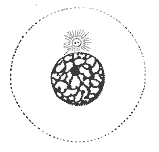
Back طور بيني Arabic İnterfaza AZ Интерфаза Bulgarian ইন্টারফেজ Bengali/Bangla Interfaza (mitoza) BS Interfase Catalan Interfáze Czech Interphase German Μεσόφαση Greek Interfase Spanish


Interphase is the active portion of the cell cycle that includes the G1, S, and G2 phases, where the cell grows, replicates its DNA, and prepares for mitosis, respectively. Interphase was formerly called the "resting phase," but the cell in interphase is not simply dormant. Calling it so would be misleading since a cell in interphase is very busy synthesizing proteins, transcribing DNA into RNA, engulfing extracellular material, and processing signals, to name just a few activities. The cell is quiescent only in G0. Interphase is the phase of the cell cycle in which a typical cell spends most of its life. Interphase is the "daily living" or metabolic phase of the cell, in which the cell obtains nutrients and metabolizes them, grows, replicates its DNA in preparation for mitosis, and conducts other "normal" cell functions.[1]
A common misconception is that interphase is the first stage of mitosis, but since mitosis is the division of the nucleus, prophase is actually the first stage.[2]
In interphase, the cell gets itself ready for mitosis or meiosis. Somatic cells, or normal diploid cells of the body, go through mitosis in order to reproduce themselves through cell division, whereas diploid germ cells (i.e., primary spermatocytes and primary oocytes) go through meiosis in order to create haploid gametes (i.e., sperm and ova) for the purpose of sexual reproduction.
- ^ Marieb E (2000). Essentials of human anatomy and physiology. San Francisco: Benjamin Cummings. ISBN 978-0805349405.
- ^ "The Cell Cycle & Mitosis Tutorial". The Biology Project – Cell Biology. University of Arizona.